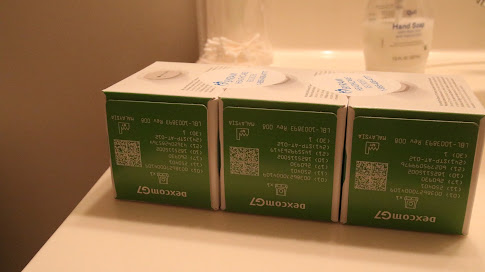By: Camden Lang
Benton McManigal gets insulin in a syringe for a shot. McManigal was diagnosed with type one diabetes when he was three years old.
Bathroom closet filled with supplies for living with diabetes. McManigal has racked up a lot of medical supplies over the years.
McManigal grabs some anti-bacterial wipes. He uses these to clean the area he's about to inject insulin into.
McManigal prepares the syringe. He only gives himself shots if his blood sugar is super high and he needs more insulin than his pump can give him.
Insulin comes in these little containers. McManigal keeps these in the fridge to keep it fresh before use.
These are "dexcom" which attach to McManigals body and read his blood sugar. He is able to check his level from his phone through an app.
McManigal shows his insulin pump with the catheter. This device allows him to pump a specific amount of insulin into his system without receiving a shot.
McManigal checks his blood sugar. This is his app through the dexcom device that tracks his blood sugar levels.
McManigal shows how he uses his insulin pump. He just carries it around in his pocket during the day.
McManigal opens up some smarties. He eats these to bring his sugar levels up, which he was doing here because he accidentally pumped insulin from his pump after giving himself a shot a few minutes before.
Off-brand smarties lie in a basket in the kitchen. McManigal has a basket of smarties in his kitchen and his own room.
McManigal shows the device that reads his blood sugar. This device is connected to his phone, so he can see his sugar levels at any point he wants.
McManigal makes sure he has everything he needs before going into work. He always brings extra catheters and an extra dexcom so he won't have to go home with an emergency.
McManigal checks his sugar levels before going to work. He showed he can also pull up his sugar levels on a computer if his phone happened to lose battery while he was out.













